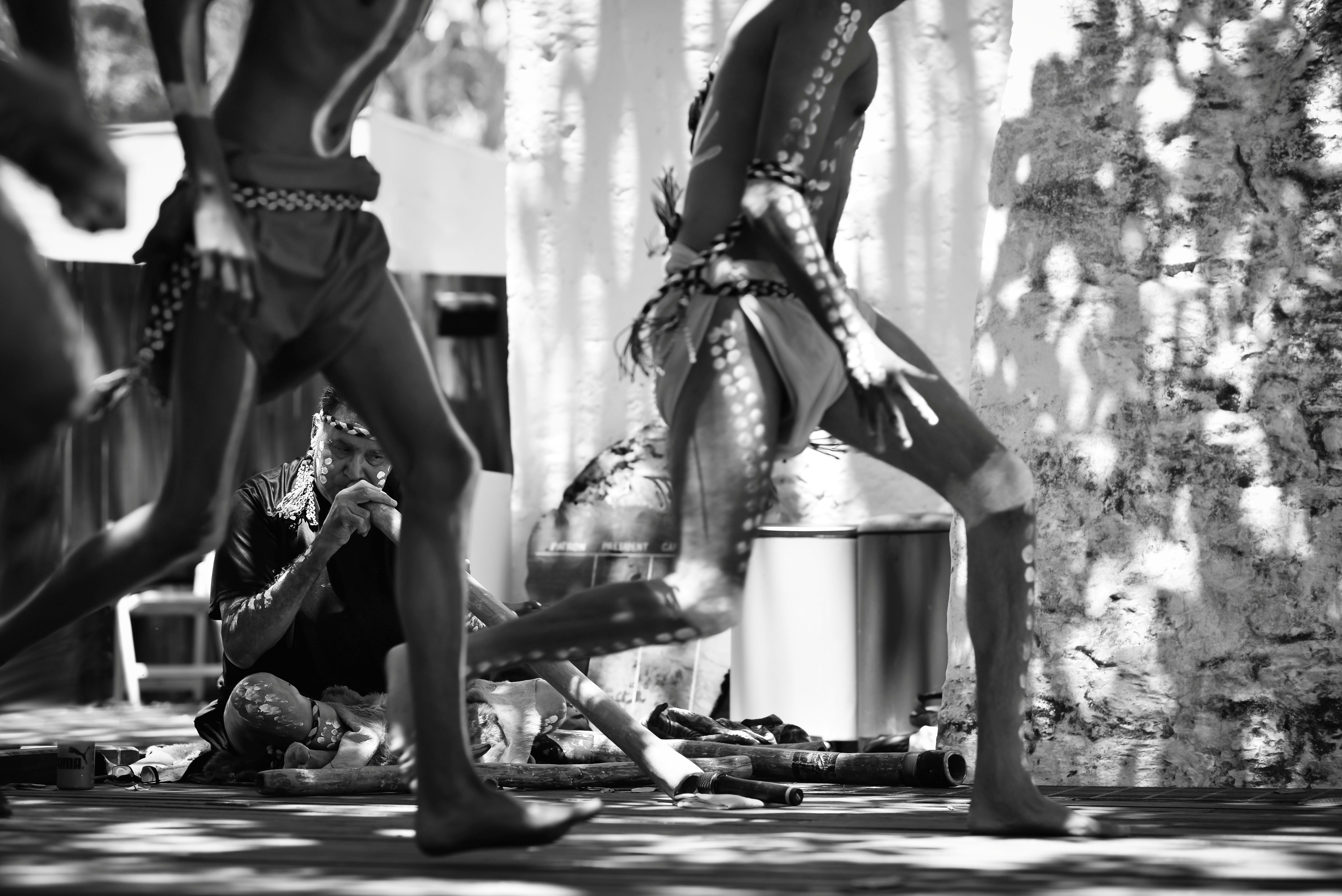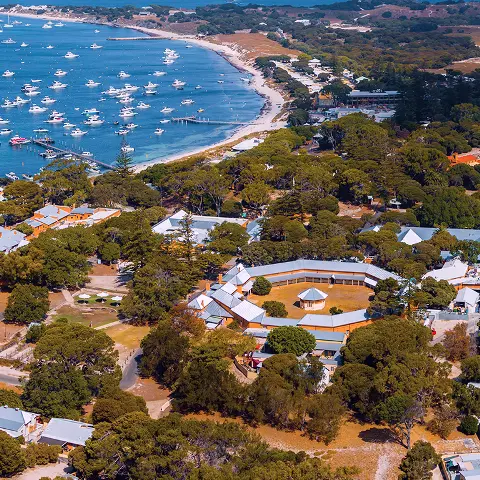Aboriginal History of Wadjemup
Wadjemup is an important site of Aboriginal heritage and reconciliation
Due to its historical use as an Aboriginal prison from 1838-1902, and subsequent forced labour camp for both Aboriginal and European internees until 1931, the island is a sorrowful place for many Aboriginal people. But its narrative and cultural importance stretches back much further.
Artefacts have been found at a number of sites on Rottnest Island, embedded in paleosols dating between 10,000 and 49,000 years ago, indicating occupation of the land by Whadjuk people prior to the island’s separation from the mainland. Their stories and culture are intertwined with the island, and it’s important that this history is recognised.
Rottnest Island has a long history
Wadjemup has been an important place for Aboriginal people for a long time, but it wasn’t always an island.
Before the last ice age, over 6,500 years ago, the land that we know as Wadjemup was connected to the mainland and was used by Whadjuk people for cultural purposes. Then, as the ice age ended and sea levels rose, the low-lying land that connected the two disappeared underwater. There is no evidence that Aboriginal visited the island once separation occurred up until their forced imprisonment under colonisation.
It wasn’t until European seafarers made first contact with the island in the 17th century that it was inhabited again—and it began its sorrowful role in Aboriginal history.
Learn about Wadjemup’s Aboriginal history.
For a long time, it was a place of pain and suffering
From 1838 to 1931, Aboriginal people were transported to Rottnest Island from all over the state for incarceration. It began with six prisoners arriving on the island, and the numbers grew from there. Up to 4,000 Aboriginal prisoners were held on the island during its tenure, and they were put to work building the prison and associated settlement infrastructure.
The entire island was strictly used as an Aboriginal prison until 1904 (except for a short period of closure from 1849 to 1855). It then became a forced labour camp for European and Aboriginal prisoners, until the final prisoner left in 1931.
It was a cruel, unforgiving place. Many Aboriginal prisoners died during the prison’s operation, through sicknesses caused by overcrowding, poor nutrition, and introduced diseases; violence; and five recorded hangings. They were buried in unmarked graves in an area now known as the Wadjemup Aboriginal Burial Ground.
Hiding the history
Wadjemup is a place of dichotomy. For a long time, the cruelty that occurred here was hidden. In 1917, the Rottnest Island Board of Control was appointed to manage Wadjemup. It was declared a Class A Reserve for public recreation, and the former prison buildings were converted into holiday accommodation.
Confronting the past
RIA’s Innovate Reconciliation Action Plan (RAP) seeks to acknowledge the island’s former role as a prison for Aboriginal men and boys, tell the truth about what happened on the island, and put steps in place that ensures all people can move forward together in an environment of cooperation and understanding.
When the fourth RAP was released, the State Government issued a formal apology to the Aboriginal people of Western Australia. The Apology recognised the pain and sadness that Wadjemup holds for Aboriginal peoples in WA, through its use as a prison, and confronted and acknowledged how Rottnest Island Authority’s past management actively hid much of its prison history.
How we’re managing important cultural heritage sites
Wadjemup has a number of registered and lodged Aboriginal sites. These include Dreaming sites, artefact scatter sites, the Quod, buildings built with forced Aboriginal labour, and the Wadjemup Aboriginal Burial Ground. These areas are protected under the Aboriginal Heritage Act 1972 (the Act), which makes it an offence to alter or interfere with them. The Act governs how RIA manages Aboriginal heritage on the island.



